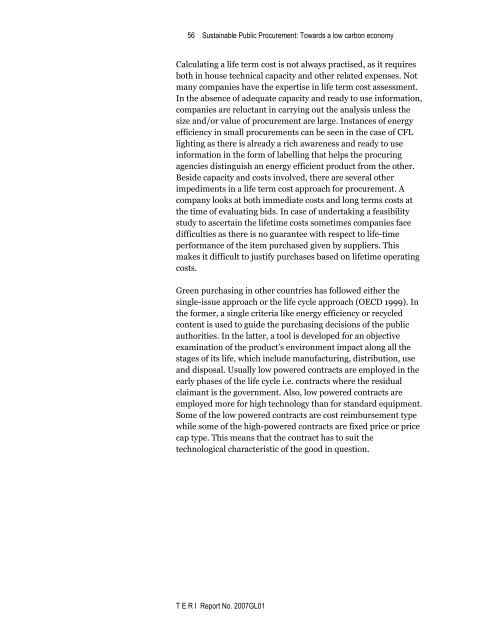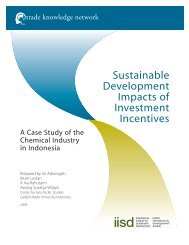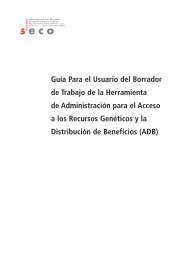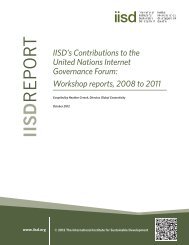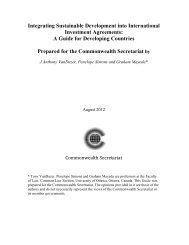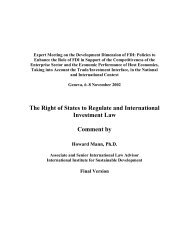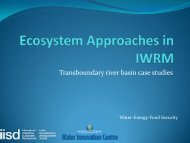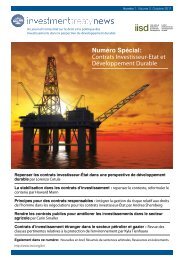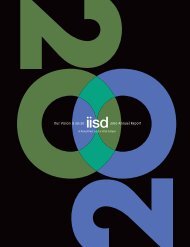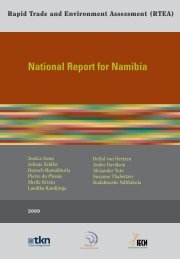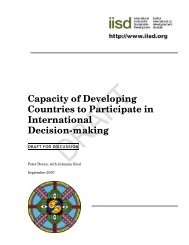Sustainable Public Procurement: Towards a lowâcarbon economy
Sustainable Public Procurement: Towards a lowâcarbon economy
Sustainable Public Procurement: Towards a lowâcarbon economy
You also want an ePaper? Increase the reach of your titles
YUMPU automatically turns print PDFs into web optimized ePapers that Google loves.
56 <strong>Sustainable</strong> <strong>Public</strong> <strong>Procurement</strong>: <strong>Towards</strong> a low carbon <strong>economy</strong><br />
Calculating a life term cost is not always practised, as it requires<br />
both in house technical capacity and other related expenses. Not<br />
many companies have the expertise in life term cost assessment.<br />
In the absence of adequate capacity and ready to use information,<br />
companies are reluctant in carrying out the analysis unless the<br />
size and/or value of procurement are large. Instances of energy<br />
efficiency in small procurements can be seen in the case of CFL<br />
lighting as there is already a rich awareness and ready to use<br />
information in the form of labelling that helps the procuring<br />
agencies distinguish an energy efficient product from the other.<br />
Beside capacity and costs involved, there are several other<br />
impediments in a life term cost approach for procurement. A<br />
company looks at both immediate costs and long terms costs at<br />
the time of evaluating bids. In case of undertaking a feasibility<br />
study to ascertain the lifetime costs sometimes companies face<br />
difficulties as there is no guarantee with respect to life-time<br />
performance of the item purchased given by suppliers. This<br />
makes it difficult to justify purchases based on lifetime operating<br />
costs.<br />
Green purchasing in other countries has followed either the<br />
single-issue approach or the life cycle approach (OECD 1999). In<br />
the former, a single criteria like energy efficiency or recycled<br />
content is used to guide the purchasing decisions of the public<br />
authorities. In the latter, a tool is developed for an objective<br />
examination of the product’s environment impact along all the<br />
stages of its life, which include manufacturing, distribution, use<br />
and disposal. Usually low powered contracts are employed in the<br />
early phases of the life cycle i.e. contracts where the residual<br />
claimant is the government. Also, low powered contracts are<br />
employed more for high technology than for standard equipment.<br />
Some of the low powered contracts are cost reimbursement type<br />
while some of the high-powered contracts are fixed price or price<br />
cap type. This means that the contract has to suit the<br />
technological characteristic of the good in question.<br />
T E R I Report No. 2007GL01


